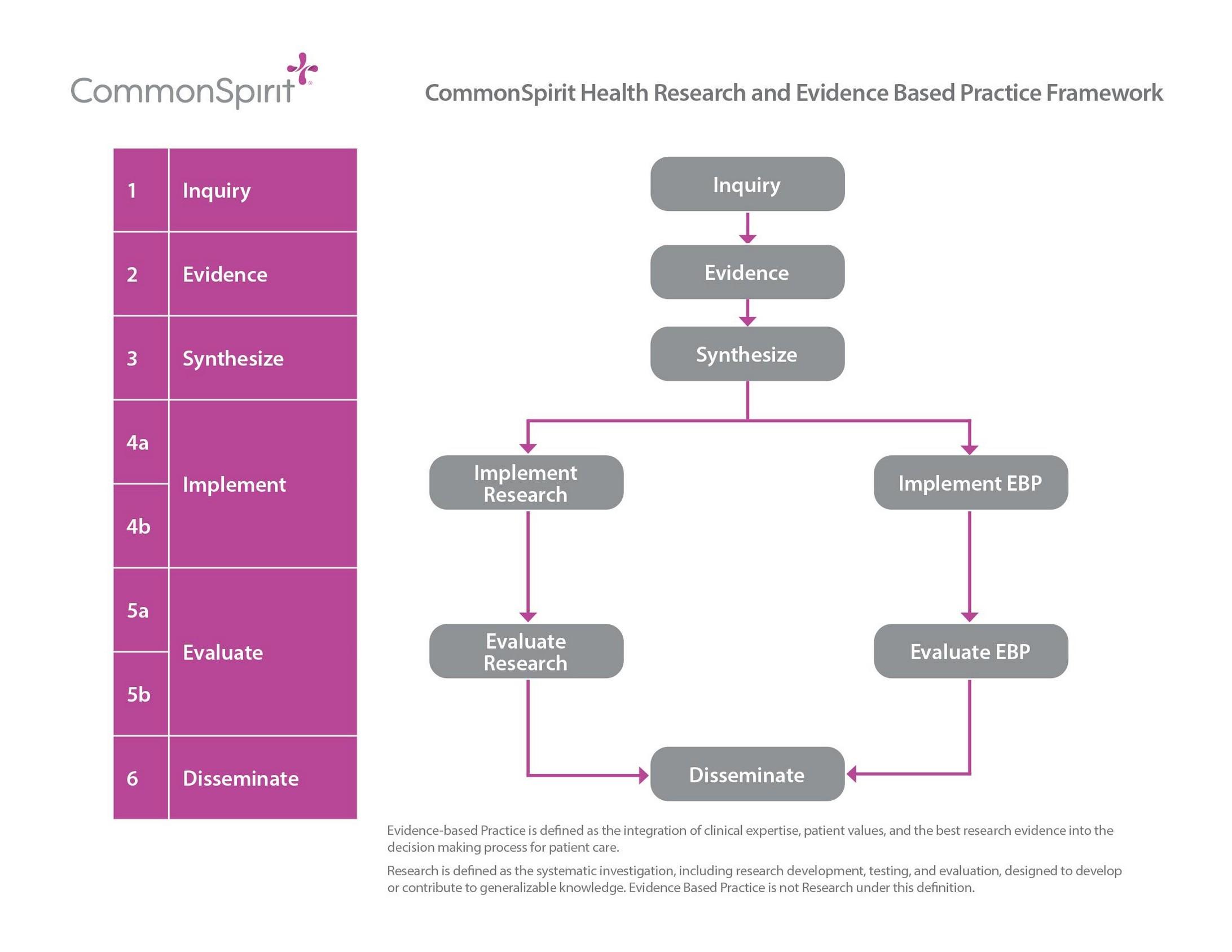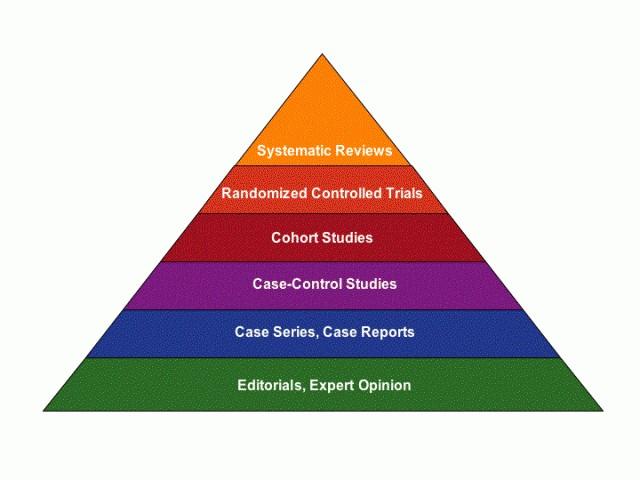Transforming Nursing Research


Lesly Kelly, PhD, RN, FAAN
La Donna Christy, PhD, RN, NEA-BC,
Objectives
● Describe how a spirit of inquiry supports nursing scholarly activity
● Identify differences between research, evidence-based practice and process/quality improvement
● Describe infrastructure in CommonSpirit Health that support nursing research and EBP
● Identify examples of nursing research and evidence-based practice

Spirit of Inquiry
● Culture or environment that is inclusive of curiosity, asking questions, seeking answers, exploring new ideas
● Constantly questioning:
○ Why are we doing it this way?
○ How can we improve?
○ Who can support?

○ Which practices are outdated?
○ Where did this evidence come from?
● More than just a spirit of inquiry in nursing - a culture of inquiry!

3
Spirit of Inquiry
Clinical Question

4
Research EBP PI
Types of Inquiry
Category Definition
Process/Quality Improvement
Process/Quality Improvement: systematic and continuous actions that lead to measurable improvement in health care services and the health status of targeted patient groups
New Knowledge
Evidence-Based Practice (EBP): the integration of clinical expertise, patient values, the best research evidence into the decision making process for patient care.
Research: the systematic investigation, including research development, testing, and evaluation designed to develop or contribute to generalizable knowledge.

5


Inquiry Leads to Asking the Question
Inquiry:
○ Journal articles
○ Previous employment
○ School/Clinicals
○ Continuing Education

○ Where else?
● Identify the problem, clinical issue, organizational issue
○ check alignment: is this a priority?
● Form a team - include key stakeholders
7
●
Searching the Evidence
● Conduct literature review

● Search terms
● PICOT:
Population

Intervention
Comparison
Outcomes
Time
8
○
○
○
○
○
Types of Evidence
● Levels of evidence

○ In nursing:
■ Descriptive studies
■ Pre-Post studies
■ Qualitative studies
● Other sources of evidence
○ best practices, patients, governing bodies

9
Synthesize the Evidence
● Synthesize the evidence: take all the evidence you have gathered and assess it together
Answer the question: there enough evidence to guide a practice change?


●
Implementation
Research Evidence-based Practice Process Improvement
There is not enough evidence There is strong and sufficient evidence
Research: the systematic investigation, including research development, testing, and evaluation designed to develop or contribute to generalizable knowledge.

Evidence-Based Practice
(EBP): the integration of clinical expertise, patient values, the best research evidence into the decision making process for patient care.
This is an existing/current process
Process/Quality
Improvement: systematic and continuous actions that lead to measurable improvement in health care services and the health status of targeted patient groups
11
Implementation Support

IRB Submission and Approval
● Investigator initiated projects, Student projects
● Supported through
○ Research council (division and local)

○ Mentors/Nurse Scientist
● CSHRI-IRB (with the support of Rae Lynn Stafford!)
● Dignity Health Arizona Research Enterprise (DHARE) IRB
13
EBP Approval Process
● If EBP, does not require IRB approval*
● At CommonSpirit, can seek EBP Approval Letter

● Committee of PhD/DNP nurses and IRB members that reviews EBP applications
○ meets every two weeks
○ uses EBP review template/criteria
○ either approves (EBP approval letter) or defers to IRB
*Some schools may require IRB determination
14
Research

15
Example - Nursing Research
● “Identifying Predictors of Airway Complications in Conscious Sedation Procedures”
○ PI: Rose Bray DNP, MSN, CCRN-K, CNML Senior Director of Nursing
French Hospital Medical Center, San Luis Obispo, California
● Retrospective cohort
● Reviewed risk factors for sleep apnea
● Study findings supported clinical procedural monitoring protocols for patients with a high probability for airway complications during conscious sedation
● Currently working on a system policy for CSH

Evidence-Based Practice

17
Example: Evidence-based Practice Project
● “Childhood Trauma: The Impact of Trauma-informed Care by Primary Care Providers”
○ Amy Farlett DNP, APRN, FNPc
Family Nurse Practitioner

Daisy Sood Family Practice Clinic, CHI Memorial Health, Chattanooga, TN
● Goal: To improve patient outcomes with the integration of trauma-informed care (TIC) practices regarding adverse childhood experiences and the clinician’s responsibility to offer appropriate trauma-informed management.
● Project included a two hour education module for providers in the clinic on TIC.
● Results demonstrated increase in provider confidence and increases in adverse childhood events (ACE) screenings and appropriate referrals to social worker.
Additional Resources for Research & EBP
Nursing Research and EBP Council
● Representatives in each division
● Supports development and infrastructure of NR & EBP

Nursing Excellence Showcase
● Demonstration of employee’s nursing research and EBP projects
Questions?










